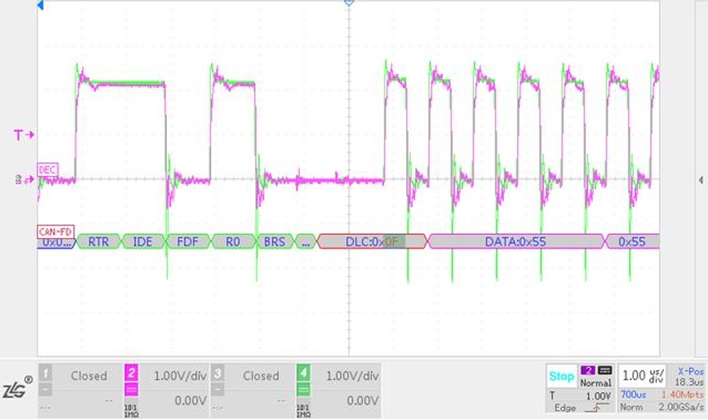1. Isolation
Generally, the “isolation” of an isolated module means that after the module is powered on, it can provide signal isolation and power isolation for the nodes. The isolation voltage levels are mainly 2500VDC and 3500VDC.
2. The rear stage is grounded
Generally, in short-distance and low-interference situations, the CAN transceiver’s CANG can be suspended. However, in actual field applications, the vast majority of CAN bus networking uses shielded twisted pairs, and the shielding layer needs to be grounded at this time.
3.總線保護電路
The CAN interface of the module faces the bus and requires a higher level of surge and electrostatic protection. Generally, the bare metal of conventional module CAN interface can withstand ±4kV static electricity and common mode ±2kV surge. If a higher level is required, a surge protection circuit can be added.
Common mode inductance: Where there is a large interference to the common mode of the bus and high EMI requirements for equipment, especially the application bus of the automotive industry using 51μH common mode inductance can effectively solve the problem. The problem brought about by adding common mode inductance is the introduction of resonance interference. When the rise and fall time of the bus signal of the transceiver is short, the common mode inductance and the bus distributed capacitance will resonate, which will affect the communication. For example, in CAN FD applications, this resonance will affect the normal communication of the bus. Figure 1 shows the waveform of the CTM5MFD module using ID segment 1Mbps, data segment 2Mbps rate communication, and adding protection circuit. The green is the waveform with the added common mode inductance, and the pink is the waveform without the common mode inductance.

Figure 1 Comparison of surge circuit with inductance waveform
In addition to the influence of the bus distribution parameters, the CAN differential signal of the module itself will also affect the resonance voltage amplitude. CAN transceiver meets the following two conditions, which can help reduce the amplitude of resonance voltage.
1) CANH and CANL signals should be synchronized and have good symmetry;
2) The rising and falling slope of the differential voltage signal composed of CANH and CANL is small;
4. Actual networking
Most general CAN isolation modules have explicit overtime protection, the minimum baud rate of the module is limited to 40kbps, and the maximum communication distance when the module is networked should be 1 km. When the maximum baud rate of bus communication is determined, the bus length and branch length of the network should not exceed the limit in Table 1.

